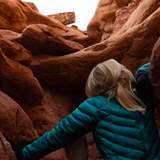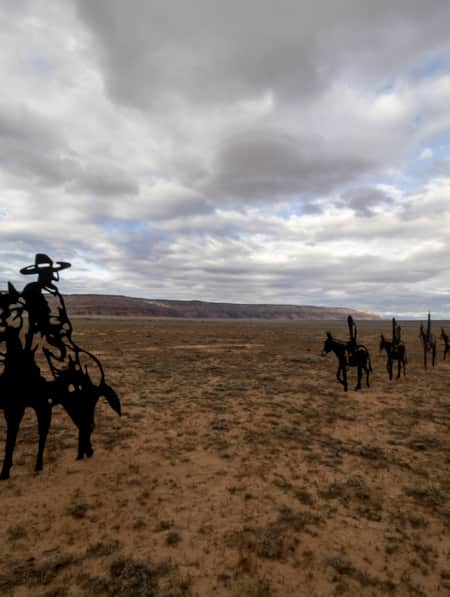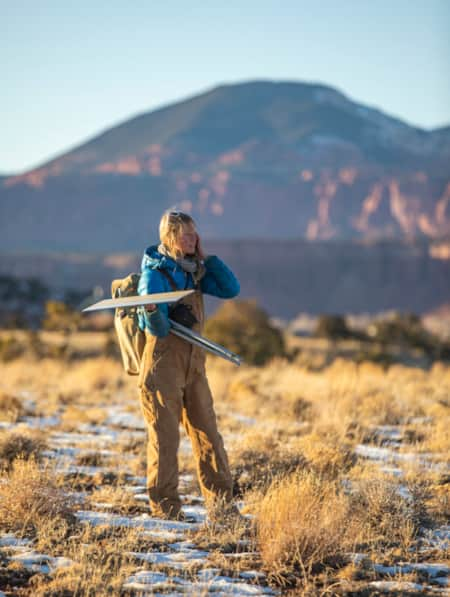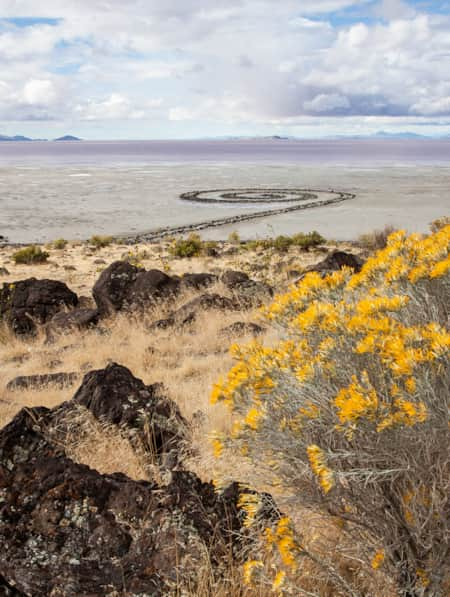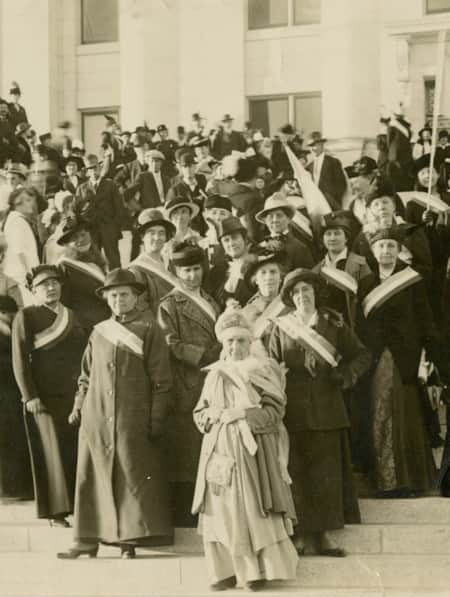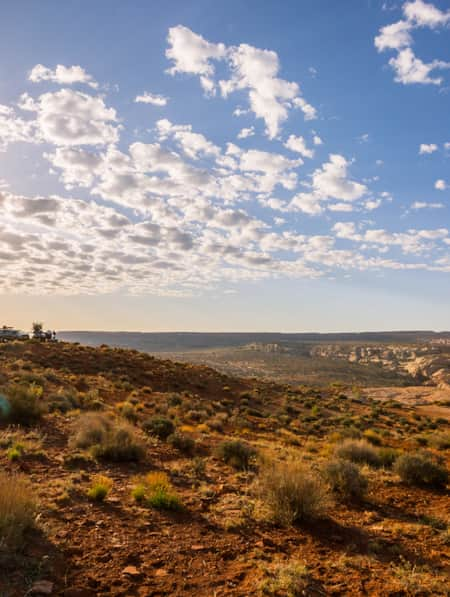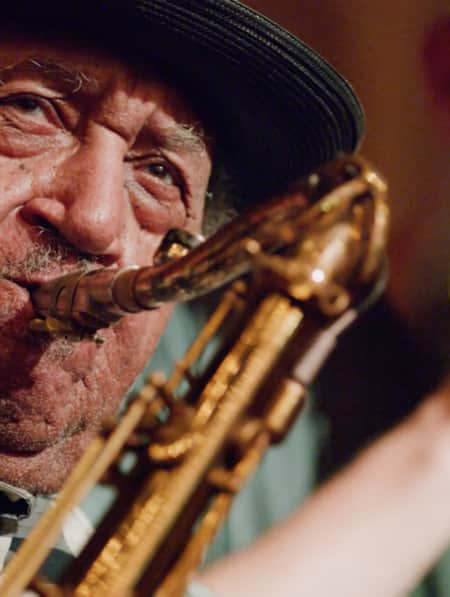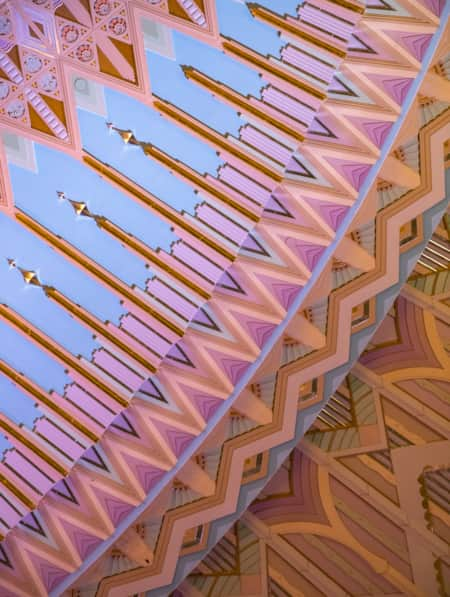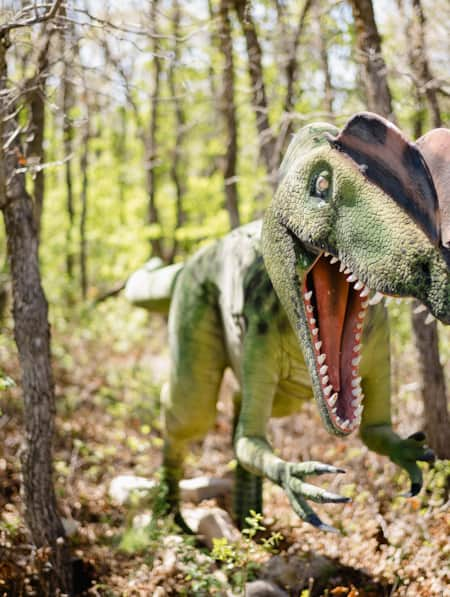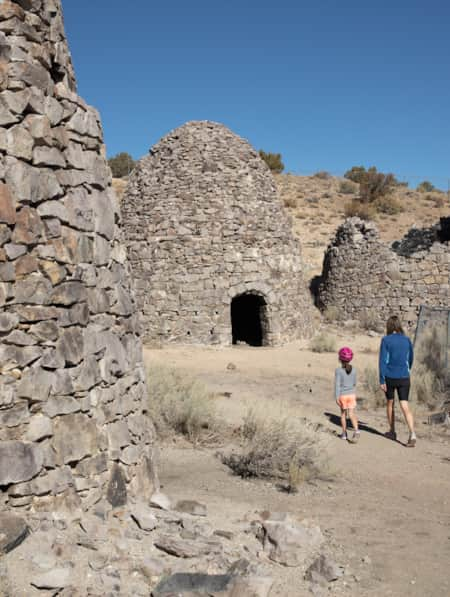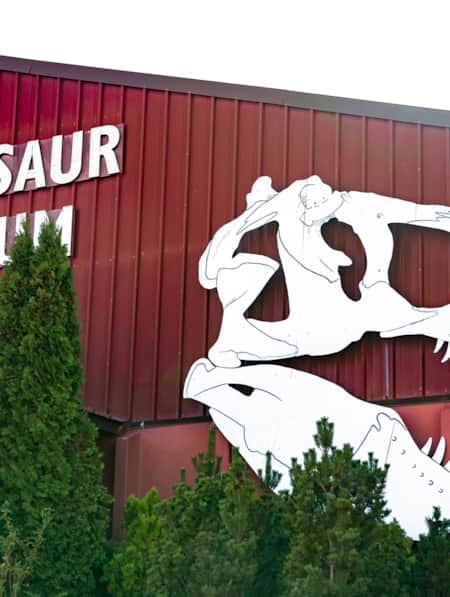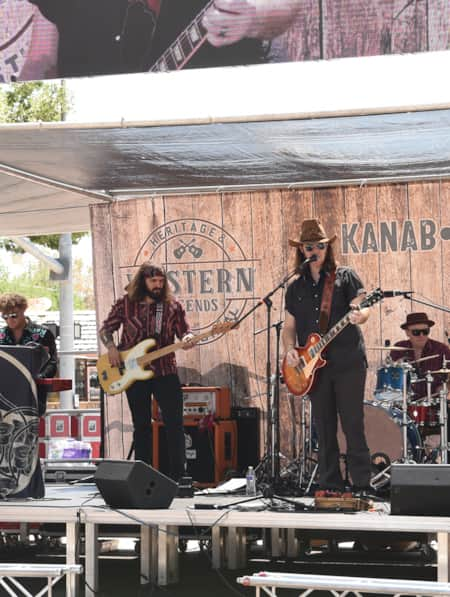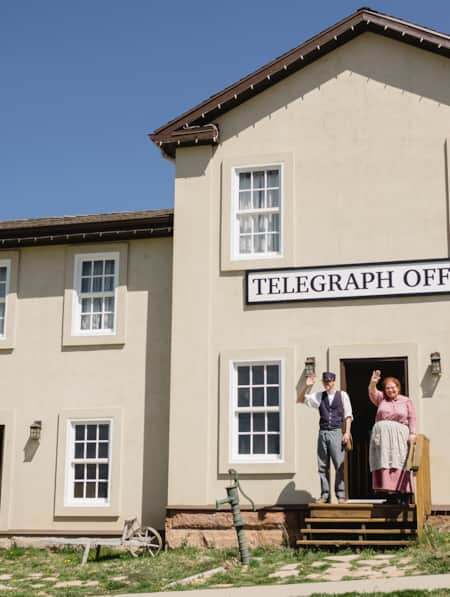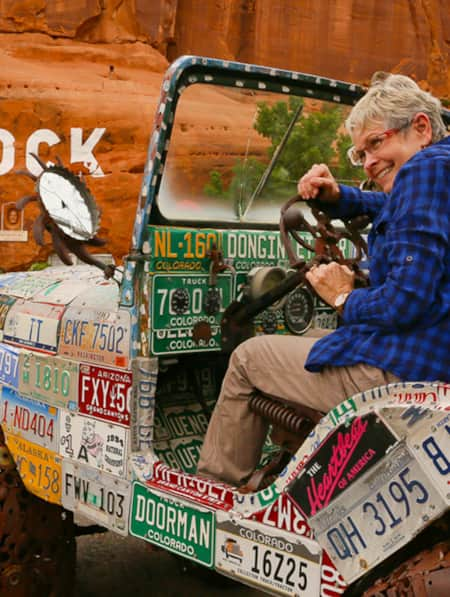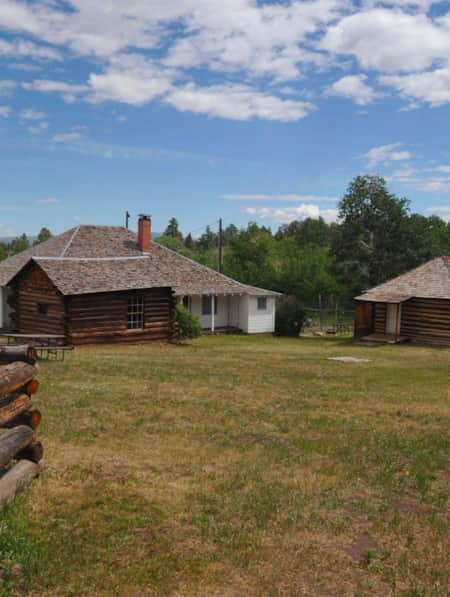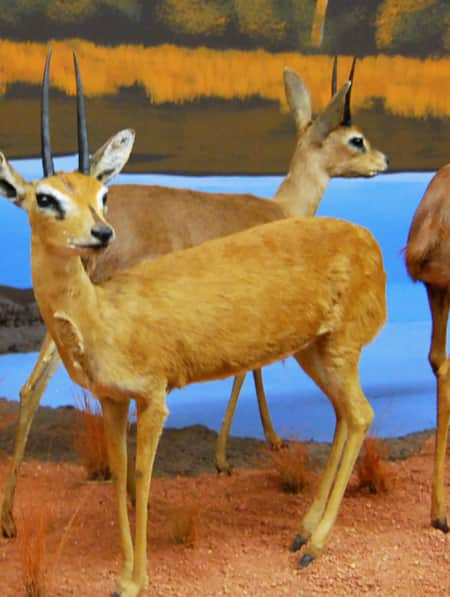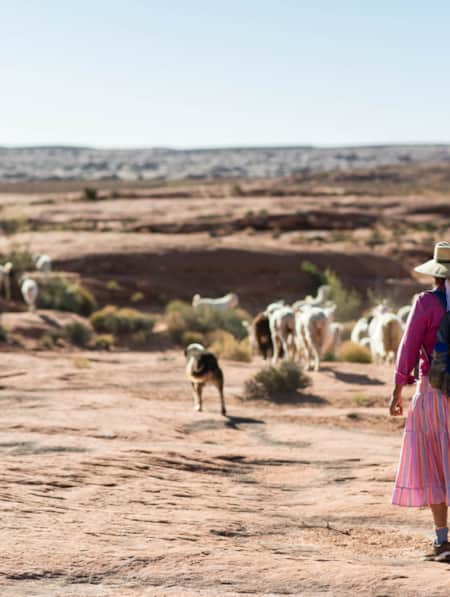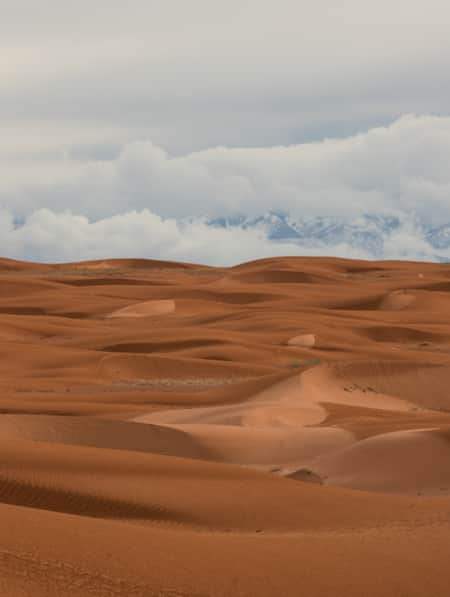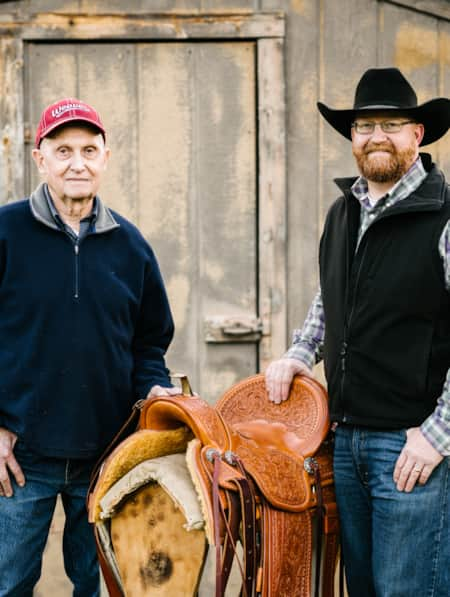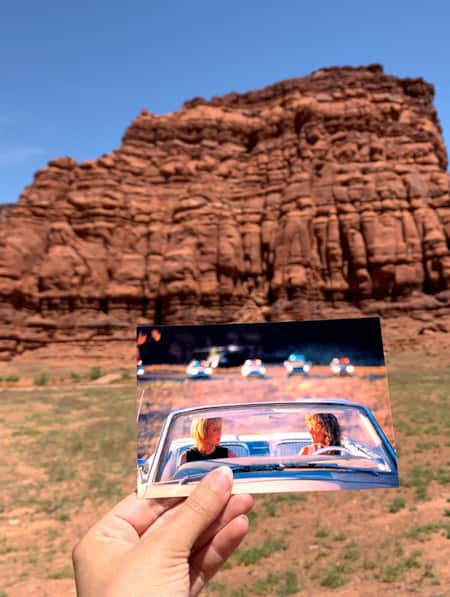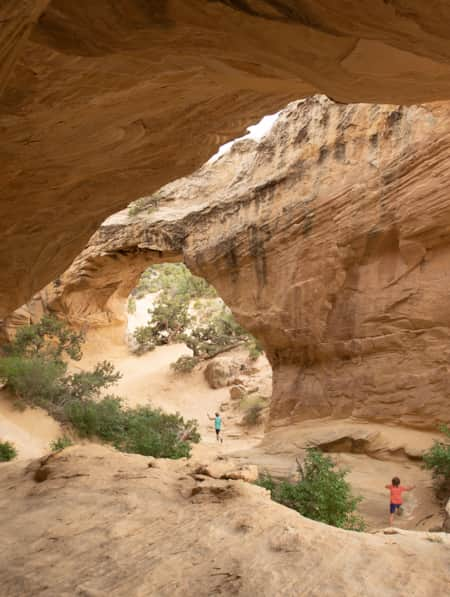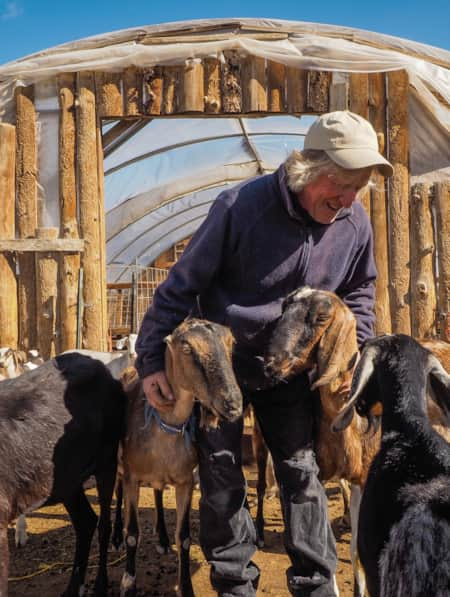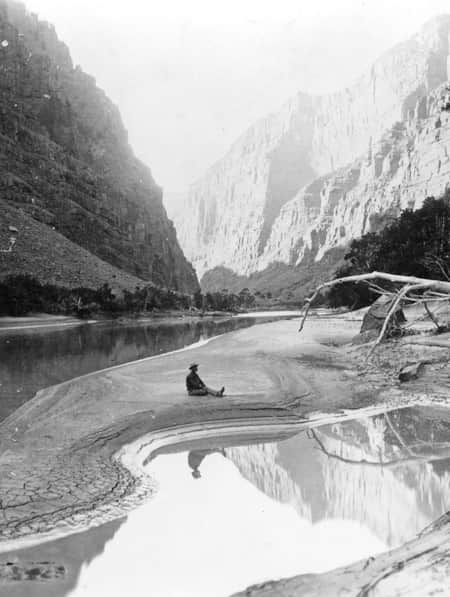Gleaning a Small Town's Harvest
Scandinavian heritage, fine arts and historic preservation define Utah’s Sanpete Valley
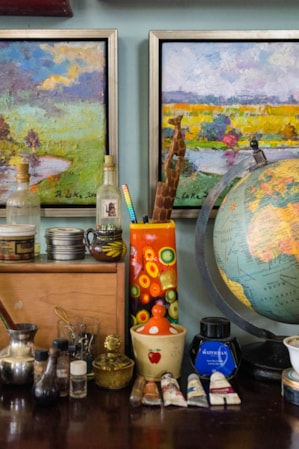
Travelers seek contrast to their usual surroundings. If you’re one of the 4.2 billion people who live in an urban area, finding contrast in Utah could be a red rock landscape, the salt flats of an ancient sea or 11,000’ snow-capped peaks. But it could also be something more human.
It could be a town with barely a thousand residents. You might call this place rural. You might describe it as country living. You might see it as a remnant of a bygone era. To be honest, you’ll likely find it a little peculiar.
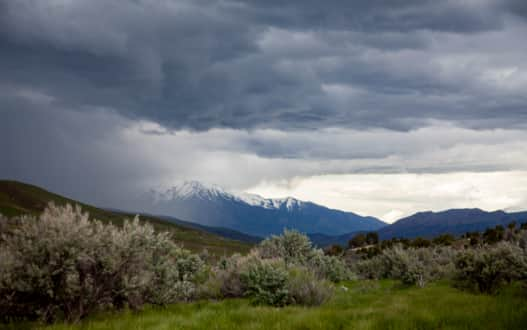
Photo: Rosie Serago
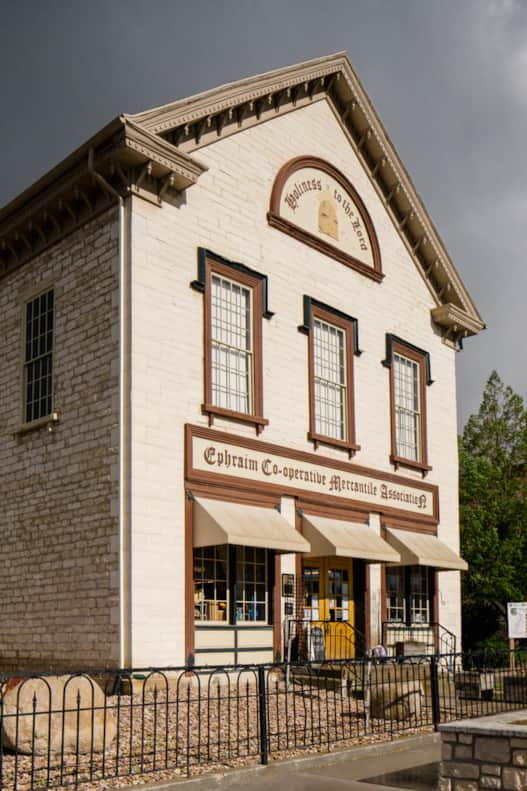
Photo: Austen Diamond
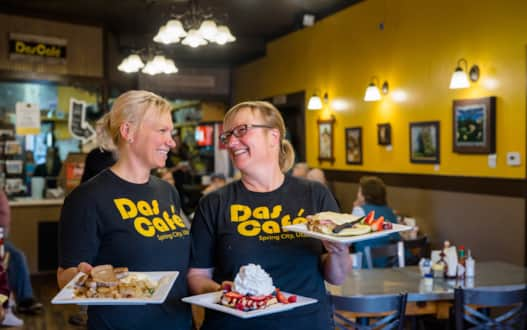
Das Café, run by Caroline Lott and Katy Harmer, who are known around town as “the Schroeder Sisters.”
Photo: Austen Diamond
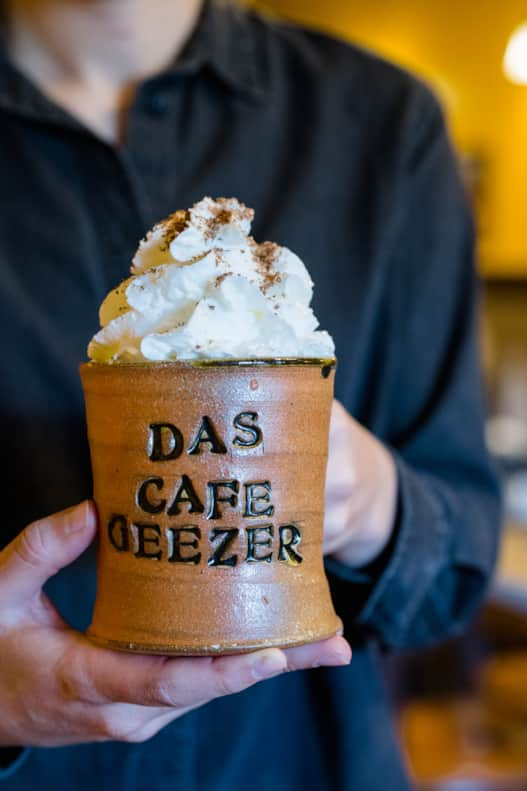
Photo: Austen Diamond
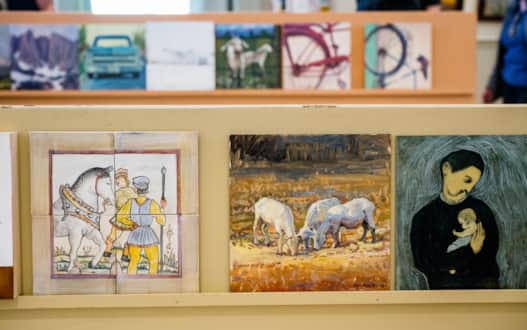
Photo: Austen Diamond
It’s the 1850s in the United States.
There are only 33 states in the union. Seventeen still to come. Harriet Beecher Stowe just published “Uncle Tom’s Cabin.” The country is debating the future of slavery, and it’s still a decade before the start of the Civil War.
When you think of it in the context of Utah’s ancient geological timescale, it’s not that long ago. Yet, it feels like an era long gone.
What do things look like in Utah in 1850? Utah is still 40 years away from statehood. Tens of thousands of converts to The Church of Jesus Christ of Latter-day Saints — known as Mormons — have fled persecution, and crossed mountain ranges and plains to settle in the Territory of Utah (or as they call it, Deseret). The territory covered the majority of what is now Utah, Nevada and a portion of Colorado.
A hundred miles south of the major pioneer settlement in Salt Lake City, a juniper-covered valley in the heart of San Pitch Utes’ territory is attracting frontier settlement by white people for the first time in its history. The area becomes known as the Sanpete Valley, tucked between two mountainous plateaus. The Latter-day Saint settlers manage to erect a log schoolhouse and twenty primitive cabins, but mostly they live in tents, caves and dugouts.
As Sanpete Valley continues to grow (and a series of conflicts and wars push the native Utes elsewhere), the region attracts a large percentage of hardy Scandanvian Latter-day Saint converts who successfully crossed the ocean and then walked across the country. By 1870, the Sanpete Valley’s population is 80 percent first- or second-generation Scandinavian.
•••
It’s now 1969. There are 50 states in the union.
In Utah, a lot has changed. The Beach Boys are doing a world tour, and they stop in Salt Lake City where they’ll play their song:
“Down in Utah
The guys and I dig a city called Salt Lake...
And girl for girl
They've got the cutest of the Western states.”
Meanwhile in Ephraim, the largest city in the Sanpete Valley, there’s a community stir over dilapidated buildings on the town’s quaint Main Street. A few locals, including well-known Latter-day Saint artist Kathleen Peterson (read: Utah Female Artists Explore the Sublime Through Art), are pushing to save two pioneer-era buildings from demolition.
One building originally served as the Ephraim Cooperative Market. Built in 1872, the two-story Greek revival-style building was constructed by Danish immigrants and modeled after the interior of a Danish sailing vessel. It’s a pristine example of “vernacular architecture,” meaning there is no architect, rather it is planned and built by the community using local materials and knowledge — in this case, shipbuilding knowledge.
The other building is the old Ephraim granary once operated by a women’s organization within The Church of Jesus Christ as part of a grain-saving program. The community’s livelihood in the winter and in times of famine depended on this wheat storage.
No one in the community cheered at the idea of demolishing their ancestral buildings, but many believed that due to the extreme homeliness of their current state, their ancestors would have been the first to advocate for “paint and fix it up or tear the dirty thing down,” as one Ephraim resident recorded. The Latter-day Saints were never fond of “eye sores” — always doing whatever they could to bring the relative refinement of their homelands to their new, somewhat uncouth desert home. In the case of damaged old buildings, sometimes it’s easier to just start over.
Yet, this group of preservationists saw not just a past, but a future in these buildings. And after a 15 year effort, they funded a complete restoration effort, in part, by starting an annual Scandinavian Jubilee as a fundraiser.
Today, the co-op building hosts a gift shop of locals’ crafts and goods, and the granary building is home to Granary Arts, a contemporary art space with rotating exhibits from across the country. (Read:"Utah's Unexpected Pit Stops".)
These locals started an unparalleled craze for historic preservation in Utah. Ten miles north of Ephraim, Spring City is one of only two sites in the United States where the entire town is on the U.S. National Register of Historic Places. The other town is well-known Colonial Williamsburg in Virginia. For lovers of history, art, fine craftsmanship, preservation and simple living, Spring City and the wider Sanpete Valley have much to offer.
•••
Anyone who knows Spring City, knows to start the day at Das Café, which means “The Cafe” in German. Run by Caroline Lott and Katy Harmer, who are known around town as “the Schroeder Sisters,” this eatery captures the surprisingly multicultural nature of many small Utah towns due to the immigration of Latter-day Saint converts. Das Café’s food and ambiance is an American-German-Mormon fusion, serving up Kraut Burgers, Bratwursts on Pretzel Buns and Mormon Mochas (a hot beverage made of Pero instead of coffee).
This Memorial Day weekend happens to be Das Café’s busiest Saturday of the year. It’s Heritage Day and thousands of locals and travelers gather for community meals, art auctions, craft fairs, performances, open studios and home tours to celebrate the town’s distinct culture and storied history. Down the road, Ephraim is also having their annual Scandinavian Festival.
"Das Café’s food and ambiance is an American-German-Mormon fusion, serving up Kraut Burgers, Brawtwursts on Pretzel Buns and Mormon Mochas."
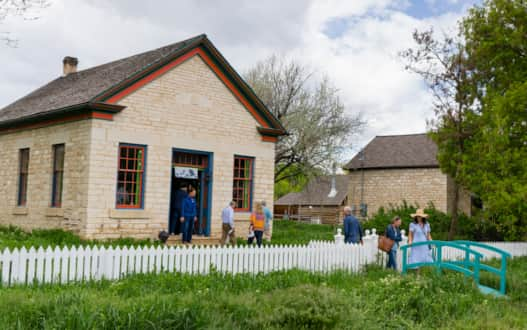
Photo: Austen Diamond
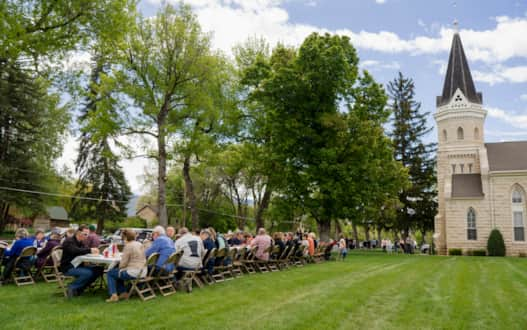
Photo: Austen Diamond
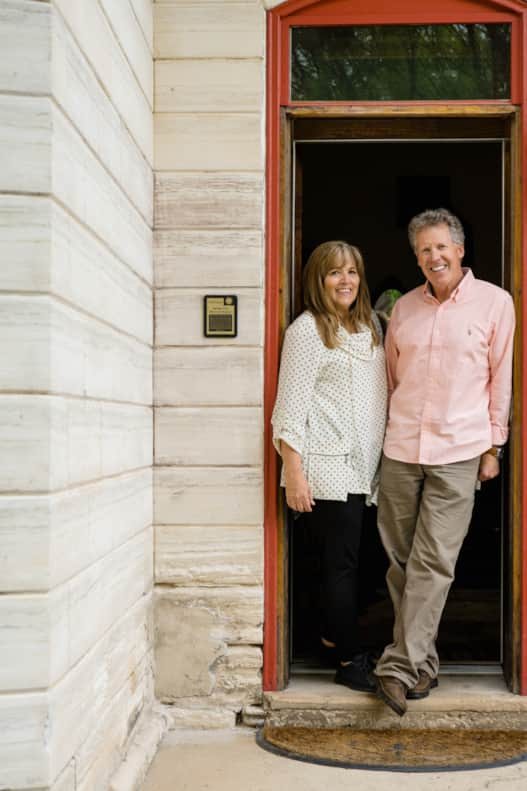
Photo: Austen Diamond
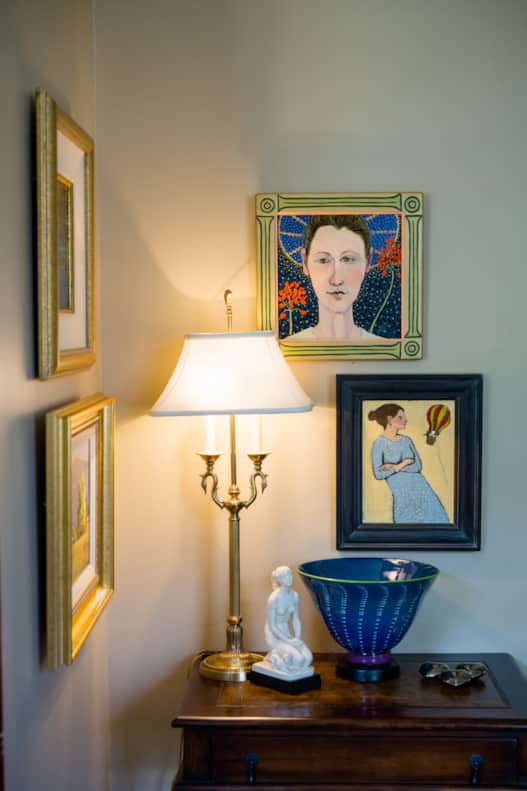
Photo: Austen Diamond
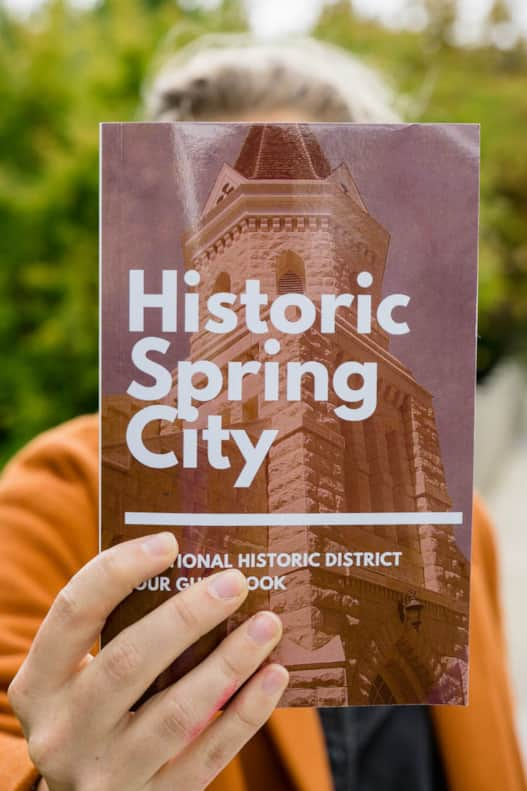
Spring City and Ephraim in the gorgeous Sanpete Valley are home to two sites important to women’s history in Utah
After an Opa’s Omelette (Opa is grandpa in German) at Das Café, I head to Horseshoe Mountain Pottery. This local shop provides Das Café with all their mugs, such as the one used at a table next to me with the inscription “Das Geezer.” I find well-known Utah potter Joe Bennion taking a break from talking with festival-goers to tend to his two-feet tall poppies. (Much to his dismay, a few poppies have suffered decapitation at the hands of young Heritage Day goers.) He’s juggling the busyness of Heritage Day and preparation for a five-day whitewater rafting trip down Utah’s Cataract Canyon. (read: Utah’s Taste of Germany)
In front of the pottery shop, local entrepreneurs have set up tents — selling arts, soaps, pottery and rhubarb pie. Joe’s wife, painter Lee Udall Bennion, is selling her Mom’s Stuff Salve, an all-purpose salve made with local piñon pine and beeswax in her Spring City workshop.
The Bennions have lived in Spring City for 43 years, and their kindness and exemplary small town-artist lifestyle have attracted many artists to join them.
One such artist is Randall Lake. Four decades ago, Joe Bennion noticed Randall plein air painting in a nearby Spring City field and struck up a conversation. Randall frequently came to Spring City to paint because he was drawn to the pioneer homes. Eventually it made sense to purchase a home and studio of his own. He used his commission from an official portrait of the governor of Wyoming to purchase a historic, derelict building.
Randall’s studio is “the love child of chaos and cosmic order,” says Joe. It’s in the old pioneer-era Endowment House, a place where early Latter-day Saints performed religious rituals in lieu of having a completed temple. A defining characteristic of Randall’s studio is the dim lighting and abundance of gas and candle-lit chandeliers.
When Randall renovated the Endowment House the electrician insisted he put in all the conduits for a modern electric system — a recommendation any forward thinking contractor might suggest. Randall agreed, but he’s never converted to an actual electric system. He paints colorful still-lifes and portraits in the dim light.
In a workshop down the street, furniture-maker Jock Jones says a visit with Joe was also a pivotal moment in his decision to relocate his studio, shop and home to Spring City. Jock specializes in handcrafted Windsor Chairs, often painted in a homemade milk paint (a way of creating pigment that has been around for more than 2,000 years).
His studio is imbued with the humble character of a craftsman. In a corner of his shop is a sign, “Little things matter a lot,” along with a charming old shop dog who looks part polar bear.
Each Heritage Day, the entire artist community comes together at the Art Squared auction. Throughout the day, patrons stop by to bid on one-foot square paintings by dozens of well-known Spring City artists including Doug Fryer, Susan Gallacher, Cassandria Parsons, Kathleen Peterson, as well as other Utah artists. This year more than 50 Utah artists participated.
A portion of auction funds go toward restoration efforts led by the Friends of Historic Spring City. Over the last decade, these funds helped restore the building in which the auction is held. The Old Spring City School, originally built in 1899, underwent a complete restoration, re-opening its doors in 2017.
•••
It’s now early afternoon and a local Latter-day Saint congregation is serving a picnic-style Turkey Dinner lunch for festival-goers, putting all the town’s youth to work in the process.
At Heritage Day, the main activity centers around “home tours.” A ten dollar donation to the Friends of Historic Spring City provides access to walk through 20 pioneer-era homes. The list of homes changes each year.
I walk into a small home belonging to Pam and Scott Newman. Pam is a landscape oil painter. The Newmans tell me that when you buy a home in Spring City it usually comes with two things: a book and a name. Their home is not known as the “Newman home” by their neighbors, it’s the “Jens Carlsen Home,” recalling the Swedish immigrant who built the home for his family in 1896.
Carlsen was one of the premier masons in the Valley at this time, and he built his home out of the region’s unique oolite limestone. Carlsen also worked on the masonry of the nearby Manti temple. On their coffee table, the Newmans display a large binder detailing the history of their home and stories of the Carlsen family and others who lived there before them.
In another home, I learn that the balcony off the master bedroom is not just a place where the current residents like to read in the summer evenings, but it is also the place where outlaw Butch Cassidy and the region’s circuit judge once discussed local disputes over a few beers (the Judge was one of the town’s few non-Mormons).
It’s apparent that the inhabitants of these old, pioneer homes see their ownership as one moment in a home’s much-longer history. They describe themselves as stewards of their homes. With this perspective, the quirks and oddities of pioneer-era construction (there are many) aren’t so much a deterrent, but an important reminder of one’s place in time.
In home after home, I’m amazed at the honest and intimate conversations I have. There’s a beauty and vulnerability that comes with walking a stranger through your personal space. I leave feeling renewed by these rare moments of authentic human connection.
•••
So, for the average traveler, what is it about the contrast of a small town in a remote valley that makes it worth adding a detour and an extra hour on the well-trodden drive between Salt Lake City and Zion National Park?
To answer this requires remembering the history of that nearly-demolished pioneer building: the Ephraim granary.
At the time the granary was originally built, the Latter-day Saints were living in abject poverty. This made gleaning essential. What does it mean to glean? Lost to many in the modern world, gleaning is the act of collecting leftover crops by hand after a field had been harvested using tools and equipment. In historic practice, gleaning was often a legal right given to the poor, and many women agricultural workers.
Gleaning is an act of collecting value from excess.
The women who originally managed the old Ephraim granary gleaned large amounts from already harvested fields — providing a tremendous lift for their humble community.
In the Spring City artist community, gleaning is widespread. There’s a reason artists flock to each other in Spring City, and it’s not just the rhubarb pie. As French filmmaker and artist Agnès Varda describes, “I'm not poor, I have enough to eat, but there is another kind of gleaning, which is artistic gleaning. You pick ideas, you pick images, you pick emotions from other people.” An artist works collective insights into each piece of art.
Here are a few things I gleaned during a weekend in the Sanpete Valley:
My home is a shared space with its own story to tell.
There is real value in restoration, fine craftsmanship and a project well-done.
I should get to know my neighbors’ names.
Much of my life depends on gleaning after the harvests made by others.
As travelers, we glean bits and pieces from the homes and homelands of others. We document these insights, we remember them, and they become part of our story, and part of our being.
We might all just glean a bit more of ourselves in the Sanpete Valley.
What's Nearby
-

Sanpete Valley
Travelers in Sanpete Valley stop in Spring City, Ephraim and Manti for a mix of local cultures, heritage activities and scenic driving along Utah's Heritage Highway 89, which winds through what is known as the Mormon Pioneer National Heritage Area.
-

Mormon Heritage
In 1847, Brigham Young and the first party of Latter-day Saint (known as Mormon) emigrants reached the desolate Salt Lake Valley. Since that day, Mormon cultural and heritage has made Utah a unique place to visit, today, Church of Jesus Christ of Latter-day Saints members comprise about 60 percent of the state's population.
